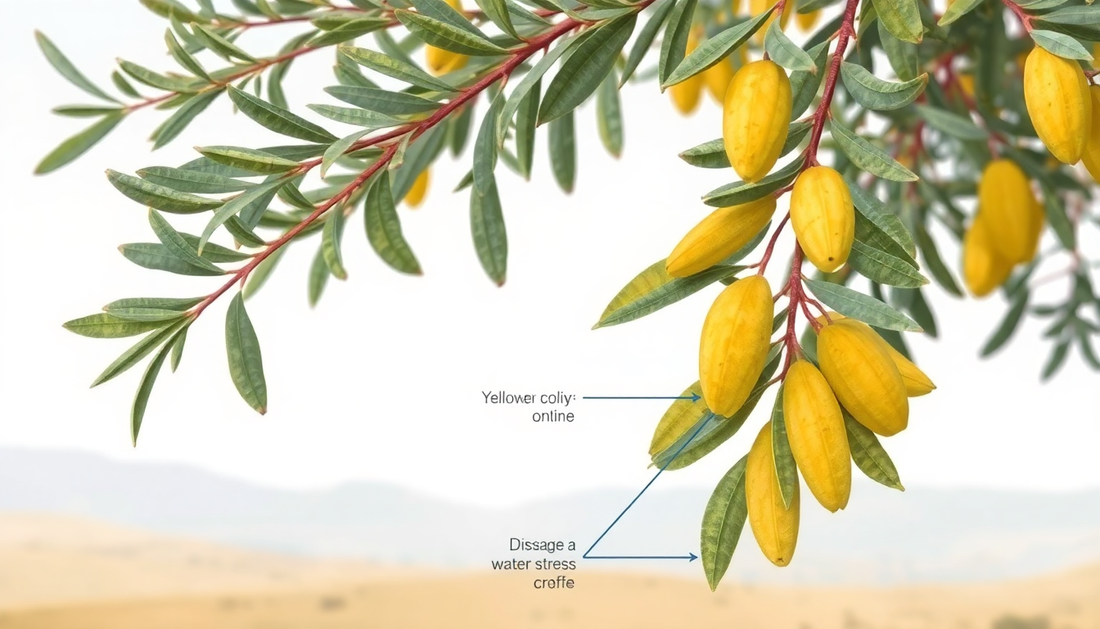
Why Are My Olive Trees Losing Their Leaves?
As a passionate gardener, I've always been fascinated by the graceful and resilient olive tree. These hardy plants have been cultivated for centuries, providing not only delicious fruits but also a beautiful, evergreen presence in gardens and landscapes. However, one common issue that many olive tree owners face is the sudden and concerning loss of leaves.
If you're an olive tree enthusiast like me, you've probably experienced the frustration of watching your once-lush foliage start to wither and drop. It can be a worrying sight, leaving you wondering what's causing this problem and how you can address it. In this comprehensive blog post, we'll dive deep into the reasons behind olive tree leaf drop and explore the best strategies to keep your trees healthy and thriving.
Understanding Olive Tree Leaf Drop
Olive trees are known for their ability to adapt to a wide range of growing conditions, but even these hardy plants can succumb to various environmental and cultural factors that can lead to leaf loss. Let's take a closer look at some of the most common causes of olive tree leaf drop:
1. Drought Stress
One of the primary reasons for olive tree leaf drop is drought stress. Olive trees are native to Mediterranean climates, where they are accustomed to periods of low rainfall. However, when they are subjected to prolonged drought or irregular watering, the trees can become stressed and start shedding their leaves as a survival mechanism.
2. Nutrient Deficiencies
Olive trees require a delicate balance of essential nutrients to maintain their health and vigor. Deficiencies in key elements like nitrogen, phosphorus, or potassium can lead to leaf yellowing, browning, and eventual drop. Improper fertilization or soil imbalances can contribute to these nutrient deficiencies.
3. Pests and Diseases
Olive trees can be susceptible to a range of pests and diseases that can cause leaf loss. Common culprits include olive leaf spot, verticillium wilt, and various insect infestations. These problems can disrupt the tree's natural processes, leading to premature leaf shedding.
4. Environmental Stressors
Sudden changes in the environment, such as extreme temperatures, strong winds, or frost, can also trigger olive tree leaf drop. These stressors can damage the leaves and disrupt the tree's ability to maintain its foliage.
5. Transplant Shock
If you've recently transplanted an olive tree, the stress of the move can cause it to shed leaves as it adjusts to its new environment. This is a natural response, and with proper care, the tree should recover and regain its healthy foliage.
Preventing and Addressing Olive Tree Leaf Drop
Now that we've identified the common causes of olive tree leaf drop, let's explore the steps you can take to prevent and address this issue:
1. Proper Watering
Maintaining consistent and appropriate watering is crucial for olive tree health. Ensure that your trees receive adequate moisture, especially during dry spells or periods of high heat. Avoid overwatering, as this can also lead to problems. Invest in a soil moisture meter to help you gauge the optimal watering schedule.
2. Balanced Fertilization
Provide your olive trees with a balanced, slow-release fertilizer formulated specifically for olive trees. This will help ensure that they receive the right mix of essential nutrients to support healthy growth and prevent deficiencies. Follow the manufacturer's instructions carefully and adjust the application rate as needed based on your tree's size and age.
3. Pest and Disease Management
Regularly inspect your olive trees for signs of pests or diseases, and take prompt action to address any issues. Use organic or natural pest control methods, such as beneficial insects or neem oil, to keep harmful infestations at bay. If you suspect a disease, consult with a local horticulturist or extension service for the best course of treatment.
4. Environmental Considerations
Protect your olive trees from extreme weather conditions, such as sudden temperature changes, strong winds, or frost. Consider using wind breaks, shade structures, or frost covers to shield your trees from these environmental stressors.
5. Proper Transplanting Techniques
If you need to transplant an olive tree, do so with care and attention. Carefully dig up the tree, preserving as much of the root system as possible, and replant it in a suitable location with well-draining soil. Water the tree thoroughly and provide it with extra care and monitoring during the adjustment period.
By addressing the root causes of olive tree leaf drop and implementing these preventative measures, you can help your trees maintain their lush, healthy foliage and continue to thrive in your garden or landscape. Remember, patience and diligence are key when it comes to caring for these resilient and long-lived plants.
Conclusion
Olive trees are a beloved and iconic part of many gardens and landscapes, but their leaf drop can be a frustrating issue for gardeners. By understanding the common causes of this problem, such as drought stress, nutrient deficiencies, pests and diseases, and environmental factors, you can take proactive steps to prevent and address leaf loss in your olive trees.
Consistent watering, balanced fertilization, effective pest and disease management, and careful environmental considerations are all crucial elements in maintaining the health and vigor of your olive trees. With the right care and attention, you can enjoy the beauty and bounty of these remarkable plants for years to come.
So, if you're facing the challenge of olive tree leaf drop, don't despair. Arm yourself with the knowledge and strategies outlined in this blog post, and you'll be well on your way to keeping your olive trees lush, green, and thriving. Happy gardening!






No comments